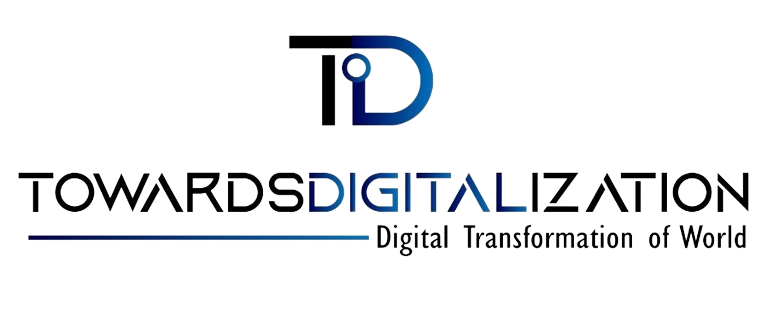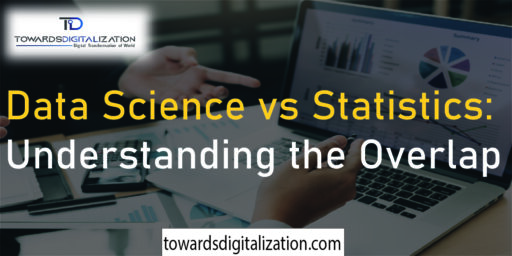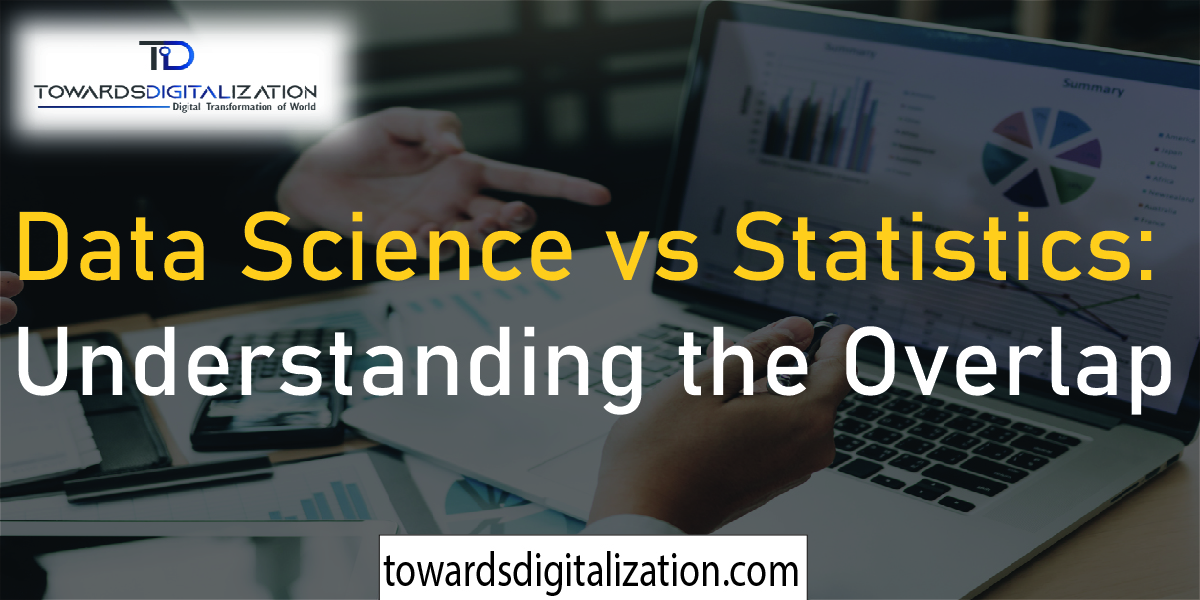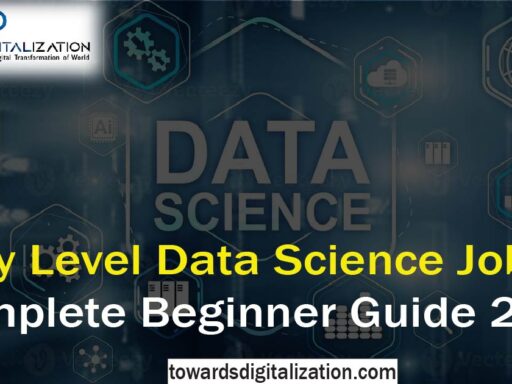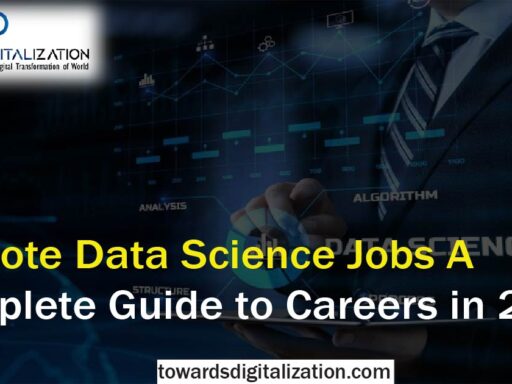Introduction
Information drives decision-making in today’s digital world, from researchers and companies to governments relying on data for strategy improvement and future outcome forecasting. But two disciplines often clash when trying to understand this information – data science vs statistics. Though both fields share similarities in how they extract facts from data, their techniques, scope, and applications vary significantly.
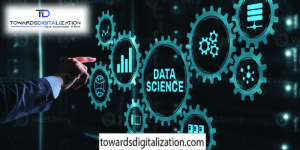
In this article we’ll investigate all aspects and relationships between data science and statistics, with emphasis placed upon their definitions, history of tools used for data science applications over time as well as future applications, in order to gain an insight into each role that each one serves in our current data-driven society.
Understanding Statistics
Statistics is the practice of collecting, analyzing and understanding data. It specializes in patterns, numbers and probabilities. Statisticians develop tests or conduct surveys and employ probabilistic theory in testing hypothesis.
Statistics is composed of two major branches.
- Descriptive statistics – Is used to summarize information by using measurements such as median, mean, standard deviation and mode.
- Inferential statistics – Use of inferential statistics that draw inferences from data samples and then apply those conclusions to larger populations.
Since ancient times, statistics has served as the backbone for economics, science, medicine and social sciences research. Long before data science statistics came along, statisticians had an essential part to play in providing guidance through systematic methods when making decisions.
Understanding Data Science
However, data science encompasses various disciplines. Born out of the rapid rise of digital data, this field involves math programming, artificial Intelligence programming and domain expertise to extract meaningful insights from unstructured and structured datasets.
Data science differs from statistics by not only looking at numbers but also complex and intricate datasets from multiple sources. The Data scientists use machine learning techniques such as predictive analytics to predict consumer behaviors, study social media content, and identify fraud.
However Data science encompasses several steps, such as:
- Data Collection – The process of gathering information from sensors, databases or even the internet.
- Cleaning Data – Eliminating inconsistencies and prepping data for analysis.
- Data Analysis – Utilizing statistical methods as well as machine-learning models.
- Data Visualization – Exchanging insights through charts and dashboards as well as interactive tools.
- Decision-Making – Utilizing results to address real world issues.
Data science transcends theory, turning raw data into useful and actionable intelligence.
Historical Evolution: From Statistics to Data Science
When considering data science vs statistics, it is crucial to grasp their path through history. Statistics has been around for centuries with applications including census data in agricultural experiments as well as medical research studies. Ronald Fisher and Karl Pearson laid down the groundwork for contemporary statistical analysis techniques used today.
Data science is still relatively young. First gaining popularity during the early 2000s when computing capabilities, storage capabilities and artificial intelligence advanced rapidly. When businesses began storing large amounts of digital information that they needed analyzed quickly, demand for data scientists skyrocketed exponentially.
One could consider data science to have evolved as an extended version of statistics. However, development of data science vs statistics included computational capabilities as well as wider applications.
Core Differences Between Data Science and Statistics
Though the fields of data science vs statistics share many similarities, data science and statistics differ significantly in several critical respects.
1. Scope
- Statistics is concerned with numerical analysis and hypothesis testing.
- Data science covers an expansive field, covering structured and unstructured data as well as machine learning techniques such as predictive modelling.
2. Tools and Techniques
- Statisticians – typically employ R, SPSS and SAS as key tools in conducting statistical analyses.
- Data scientists – utilize Python, Hadoop and TensorFlow technologies as part of their data science practice on cloud platforms.
3. Data Type
- Statistics is most efficient when conducted on organized datasets.
- Data science encompasses both unstructured and structured forms of information such as images, text documents, and videos.
4. Application Focus
- Statistics is primarily concerned with theoretical analysis and inference.
- Data science is an evolving discipline focused on practical applications, automation and making informed decisions.
5. Skillset
- Proficiencies Statisticians require extensive expertise in mathematics and probabilities.
- Data scientists require programmers, artificial intelligence (AI), domain experts, statistics specialists and domain knowledge.
These differences highlight how each field contributes something unique to today’s data landscape.
Similarities Between Data Science and Statistics
Although data science vs statistics may have their differences, both disciplines aim to find meaning in data. Some examples of overlap include:
- Use of Probability – Both depend heavily on probability theory to explain uncertainty.
- Data Interpretation – Both areas seek to interpret the patterns found within data.
- Experimentation – Statistics and data scientists engage in experimentation and conduct studies to validate their results.
- Decision Support – Both services contribute to an evidence-based approach to decision-making.
Therefore, instead of viewing statistical vs data science as rival disciplines, it would be more accurate to view them as complementary fields.
Applications of Statistics
Statistics remains relevant across multiple sectors.
- Healthcare – Delivery requires validating the effectiveness and studying effects of new drugs for patients to determine whether their effectiveness. This process must also account for adverse interactions.
- Economics – involves monitoring unemployment, inflation and market trends.
- Education – involves evaluating student performance while improving teaching methods.
- Sports – Evaluation of player performances and predicting the outcomes of matches.
Statistics offer crucial insight through an organized analysis.
Application of Data Science
Data science can play an essential role in industries dealing with large volumes and complex datasets.
- E-commerce – Products recommended based on purchase history are recommended to users.
- Finance – Automating the detection and scoring of fraudulent transactions.
- Social Media – Analysis Examining user behaviors to increase engagement.
- Transportation – Automating autonomous vehicles using real-time information.
- Health – AI technology can detect disease based on medical images.
Data science addresses current challenges where traditional statistics fall short.
The Role of Technology
Technology plays a central role in discussions around data science vs statistics. From cloud services and high performance computing systems to artificial intelligence applications and modern statistical software packages that enhance traditional methodologies.
Statisticians might still rely on regression models while data scientists often utilize neural networks capable of managing hundreds of variables. Technology allows both disciplines to expand their scope while strengthening interdependence.

Challenges Faced by Each Field
Every discipline encounters their own set of unique challenges.
- Statistics in Action: Limited data access, assumptions about distributions or smaller sample sizes may impede conclusions drawn from statistics.
- Challenges of Data Science: Concerns in this area include privacy issues and computational costs as well as potential bias in algorithms.
However, these fields continue to advance due to new technologies and methods being employed.
Career Paths in Data Science vs Statistics
From an employment point of view, both fields offer promising career options.
- Statisticians tend to work for healthcare institutions, government agencies, research institutes and universities; their tasks typically include designing tests, testing results and offering advice about policies.
- Data scientists, on the other hand, are in high demand among tech and finance companies as well as e-commerce platforms and startups alike. They specialize in large data models with predictive capabilities as well as artificial intelligence — often working alongside multiple data scientists on projects.
As data scientists are in high demand and their work can scale quickly, their salaries tend to be more expensive.
The Future of Statistics
Think back over history; statistics has always played an integral part of evaluating hypotheses, conducting experiments and carrying out research. Even as data science broadens its reach, statistics still stand as its cornerstone, providing accurate analyses – without them machine learning models may produce untrue results.
Statistics will continue to thrive when working together with data sciences instead of competing against them.
Future of Data Science
Data science promises to advance through developments in artificial intelligence, natural language processing and quantum computation technology. As business’ data volumes surge exponentially, they will need reliable predictive and prescriptive intelligence from data scientists in order to make smart business decisions.
Ethics are crucial when it comes to data and AI practices that determine their direction for future data science research and practice, thus data scientists must ensure transparency, fairness and accountability within their algorithms.
Bridging the Gap
At its heart, data science vs statistics should collaborate. Studies in statistics can bolster data science fields while using computational tools can broaden their reaches – thus becoming the basis of modern analytics.
One example would be conducting clinical research, which requires statistical techniques for evaluation and research. Data science tools may then be utilized to enable machine learning methods in order to predict patient reactions more precisely – leading to stronger and more precise outcomes than before.
Conclusion
data science vs statistics each play an essential part in today’s digitally driven world. Statistics provides essential knowledge that ensures reliability and accuracy. Data science brings innovative applications by harnessing its computational power for real-time uses.
Instead of seeing our adversaries as threats or enemies, it is crucial that we recognize their unique strengths. A combination of statistics with cutting-edge advances in data science enables scientists, businesses, and policymakers to access all the benefits associated with data.
Data science or statistics alone cannot create a prosperous society – both disciplines must come together in order for our futures to flourish.
Frequently Asked Questions
Question 1: What is the difference between data science and statistics?
Data science emphasizes practical applications of computation while statistics specializes in theoretical rigor and inference.
Question 2: How is data different from statistics?
Data refers to unprocessed information before any analysis or interpretation has taken place. Data files typically store their content machine-readable formats. Statistics is the study of data analysis.
Question 3: What is the relationship between data science and statistics?
Data scientists use statistical methods of analysis. As such, they must be knowledgeable both in statistical matters as well as other disciplines that apply.
Question 4: What is the process of data science?
Data science is an approach which utilizes systematic analysis and interpretation of data to gain important insights and address real world problems.
Question 5: What statistics are utilized by data science?
Research in data sciences relies on inferential and descriptive statistics as well as probabilities.
